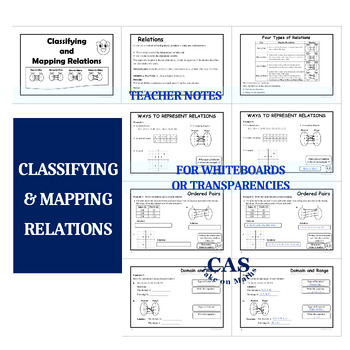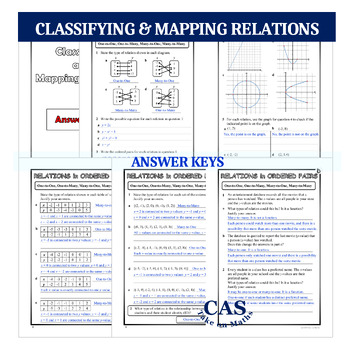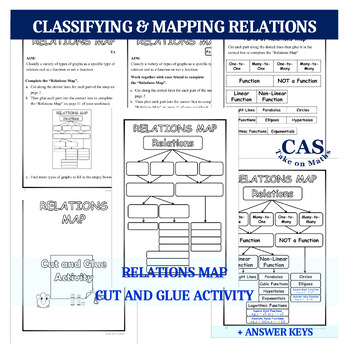Functions-Classifying and Mapping Relations Workbook
- Zip
Description
CLASSIFYING AND MAPPING RELATIONS WORKBOOK
Scaffolded notes + worksheets + activity + solutions + mini folded notes to
learn and practise:
- Understand the types of relations
- Identify types of relations in a given domain and range in forms such as mapping diagrams, sets of ordered pairs and a table of values.
- Classify a variety of types of graphs as a specific type of relation and as a function or not a function.
- Understand the formal definition of a function as a set of ordered pairs (x, y) of real numbers such that each x-value is exactly connected to one y-value.
THIS RESOURCE INCLUDES: (7 files in one zip)
• File 1: Resources Description and other info
• File 2: Teacher Notes for transparencies and whiteboards
• File 3: Workbook A (Fill in the blank notes + Worksheets)
• File 4: Workbook B (Filled notes + Worksheets)
• File 5: Solutions
• File 6: Relations Map activity
• File 7: Student mini folded notes
There are two styles of the workbook.
- Style 1: Cover, fill in the blank notes and worksheets
- Style 2: Cover, filled notes and worksheets
Total pages in each workbook: 14
Easy classroom preparation:
For teacher notes: print the notes on transparencies or display them on a whiteboard.
• For the workbook: print and staple all pages together to make a book.
• For the activity: print the activity. Students need scissors and glue.
• For the mini folded notes: print, fold and glue the pages to make a mini notebook.
Grades: 9th & 12th
Learning Outcomes:
- Define a relation as any set of ordered pairs (x, y) of real numbers.
- Define a function and a relation as mappings between sets, and as a rule or a formula that defines one variable quantity in terms of another.
- Identify types of relations in a given domain and range in forms such as mapping diagrams, sets of ordered pairs and a table of values.
- Understand the formal definition of a function as a set of ordered pairs (x, y) of real numbers such that each x-value is exactly connected to one y-value.
- Write a possible equation for relations.
- Classify a variety of types of graphs as a specific type of relation and as a function or not a function.
Also comply with Australian Curriculum:
Use function notation, domain and range, independent and dependent variables (ACMMM023)
Understand the concept of the graph of a function (ACMMM024)
Other products about functions:
- Mapping Diagrams and Functions Workbook
- Asymptotes of Rational Functions Video lesson
- Asymptotes of Rational Functions Worksheets
My other resources:





